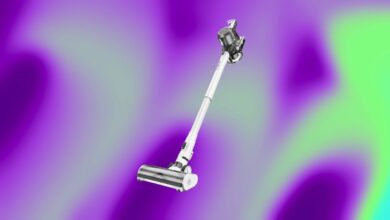Inside the world’s first PRIVATE space station: Haven-1 features queen beds, a state-of-the-art gym and maple interior – and will launch next year

Growing up, many of us dream of one day going into space.
But the reality of life aboard the International Space Station (ISS) is much less glamorous than you might think.
As we recently discovered when two NASA astronauts were stranded there, the ISS is extremely claustrophobic, with residents forced to sleep in telephone booth-sized bedrooms, use vacuum-powered toilets, and wear the same underwear for weeks.
Things are looking up for future space travelers, however, as the world’s first private space station has been unveiled ahead of launch next year.
The space station, called Haven-1, is much more modern and spacious than the ISS, with queen-size beds, a state-of-the-art gym and a maple wood interior.

The space station, called Haven-1, is much more modern and spacious than the ISS, with queen-size beds, a state-of-the-art gym and a maple wood interior

Because there is no gravity to keep you horizontal, sleeping in space has been a challenge for astronauts in the past. However, Vast hopes to address this issue with a signature patent-pending sleep system
Haven-1 is the brainchild of the American space company Vast, which collaborated on the design with world-famous designer Peter Russell-Clarke.
“Astronauts living in weightlessness present unique design challenges,” said Russell-Clarke, who previously worked at Apple.
‘Creating an environment that is both highly efficient and naturally reassuring leads to completely new results.
“Haven-1 interiors are unprecedented, precision engineered and thoughtfully designed to ensure residents can thrive within the space.”
From the outside, Haven-1 looks like any other spacecraft.

The space station features a central window, allowing astronauts to experience a full view of Earth

The interior is much warmer and more welcoming than the ISS, with maple interiors throughout
However, the interior is much warmer and more welcoming than the ISS, with maple interiors throughout.
“Notably, Haven-1’s interior surfaces are soft and padded to provide an additional safety component for crew and visitors as they float around,” Vast explained.
The station’s four private quarters are located above and below the main corridor, providing astronauts with a space to rest and recharge.
‘These extensive personal rooms are slightly larger than the crew quarters aboard the ISS and are uniquely designed to allow changing space, entertainment, online communication with loved ones on Earth (made possible by SpaceX Starlink connectivity) and, most importantly, proper night’s sleep,” said Vast.

The interior surfaces of Haven-1 are soft and padded to provide an additional safety component for crew and visitors as they float through the ship

Astronauts can stay active in the state-of-the-art gym, equipped with a resistance band system

From the outside, Haven-1 looks like any other spacecraft. However, the interior is much warmer and more welcoming than other crafts
Because there is no gravity to keep you horizontal, sleeping in space has been a challenge for astronauts in the past.
However, Vast hopes to address this issue with a signature patent-pending sleep system.
‘[This] is approximately the size of a queen bed, provides a tailored amount of equal pressure all night long and is suitable for both side and back sleepers,” the company explains.
The main common area measures 24 m³ and will serve as a multi-functional hub where the crew can eat, exercise, conduct laboratory experiments and relax.

The main common area measures 24 m³ and will serve as a multifunctional hub where the crew can eat, exercise, conduct laboratory experiments and relax

Veteran NASA astronaut, Andrew Feustel, has logged more than 225 days in space on the ISS and played a crucial role in advising Vast on the space station

A fold-out table folds into the floor when not in use, while astronauts can look at Earth through a large observation window
A fold-out table folds into the floor when not in use, while the astronauts can look at Earth through a large observation window.
In the meantime, astronauts can stay active in the state-of-the-art gym, equipped with a resistance band system.
“The resistance band system in the common area has body and station anchors for customized exercise routines that target bone, muscular and cardiovascular fitness,” Vast said.
‘The system is capable of both linear and rotational resistance exercises, focusing on the musculoskeletal health of both the upper and lower body.’

Although the cost of building Haven-1 has not been disclosed, Vast says it will have invested approximately $1 billion by the time the station is launched.

According to Vast, the space station will not be launched until August 2025
Veteran NASA astronaut Andrew Feustel has logged more than 225 days in space on the ISS and played a crucial role in advising Vast on the space station.
“From communications and connectivity, to private space and interaction with others on board, to advancing human progress on Earth and beyond, every detail is designed with the astronaut experience at the heart of our work,” Mr Feustel said.
‘A big part of what we’ve learned about the ISS is exploring how living in microgravity affects the human body, both physically and psychologically – and one of the lessons I’ve learned is that intuitive design is not a luxury in that regard: it is the key to ensuring astronauts can work. and live seamlessly in the space.
‘To see that the design of Port-1 solves many of the challenges we faced on board the ISS, and to use the progress we’ve made there to ensure we can do this in the long term while taking care of ourselves is just extraordinary.”
Although the cost of building Haven-1 has not been disclosed, Vast says it will have invested around $1 billion by the time the station is launched.




